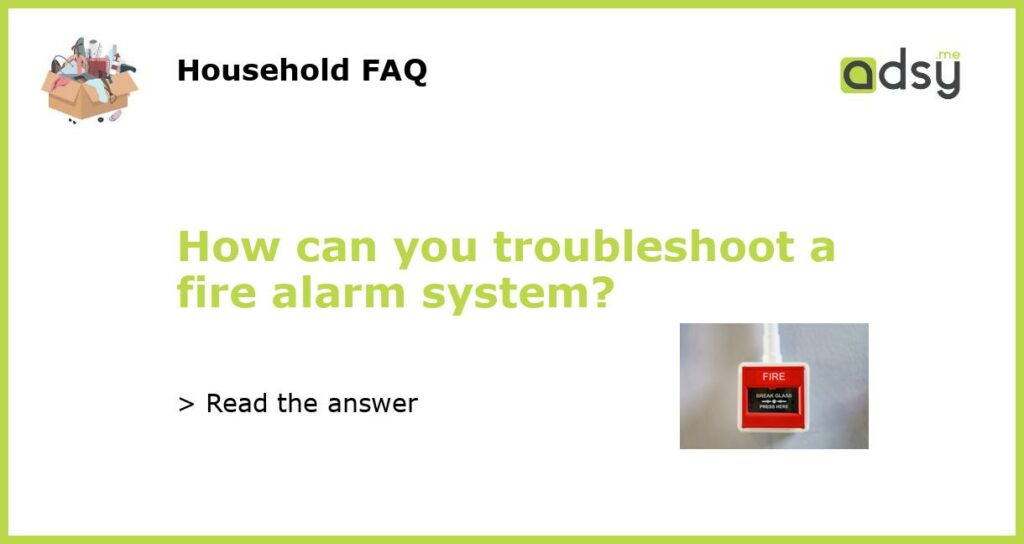Understanding Fire Alarm Systems
Before we dive into troubleshooting, it’s important to understand the basics of a fire alarm system. This system is designed to detect smoke or fire and alert building occupants. It typically includes smoke detectors, heat detectors, alarms, and a control panel that monitors the system. When a detector detects smoke or heat, it sends a signal to the control panel, which activates the alarm.
Common Fire Alarm System Issues
Like any mechanical system, fire alarms can experience problems from time to time. Here are some common issues to look out for:
- False alarms
- Failure to detect smoke or fire
- Intermittent or inconsistent alarms
- System malfunctions or failures
Troubleshooting Steps
When troubleshooting a fire alarm system, it’s important to follow a systematic approach. Here are some general steps to take:
Step 1: Assess the Alarm
The first step is to determine if the alarm is sounding for a legitimate reason or if it’s a false alarm. Check the control panel to see which detector triggered the alarm, and investigate the area to see if there is any smoke or fire. If it’s a false alarm, silence the system and address any issues with the specific detector.
Step 2: Check the Power Source
If the alarm is not functioning at all, check the power source. Ensure that the system is properly connected to an electrical power source and that the backup batteries are charged and functioning correctly.
Step 3: Inspect the Detectors
If the alarm is malfunctioning, check the detectors themselves. Look for any physical damage or signs of wear and tear, and make sure they are clean and free of dust or debris. If the detectors are outdated or damaged, they may need to be replaced.
Step 4: Check Wiring and Connections
If the issue is not with the detector itself, check the wiring and connections. Ensure that all wires are properly connected and that there are no breaks or damaged areas.
Step 5: Call a Professional
If you are unable to resolve the issue, it may be time to call in a professional. An experienced fire alarm technician can diagnose and repair more complex issues and ensure that your system is functioning correctly.
By following these troubleshooting steps, you can identify and resolve many common issues with fire alarm systems. Regular maintenance and inspection can also prevent problems from occurring and ensure that your system is ready to respond in case of an emergency.






